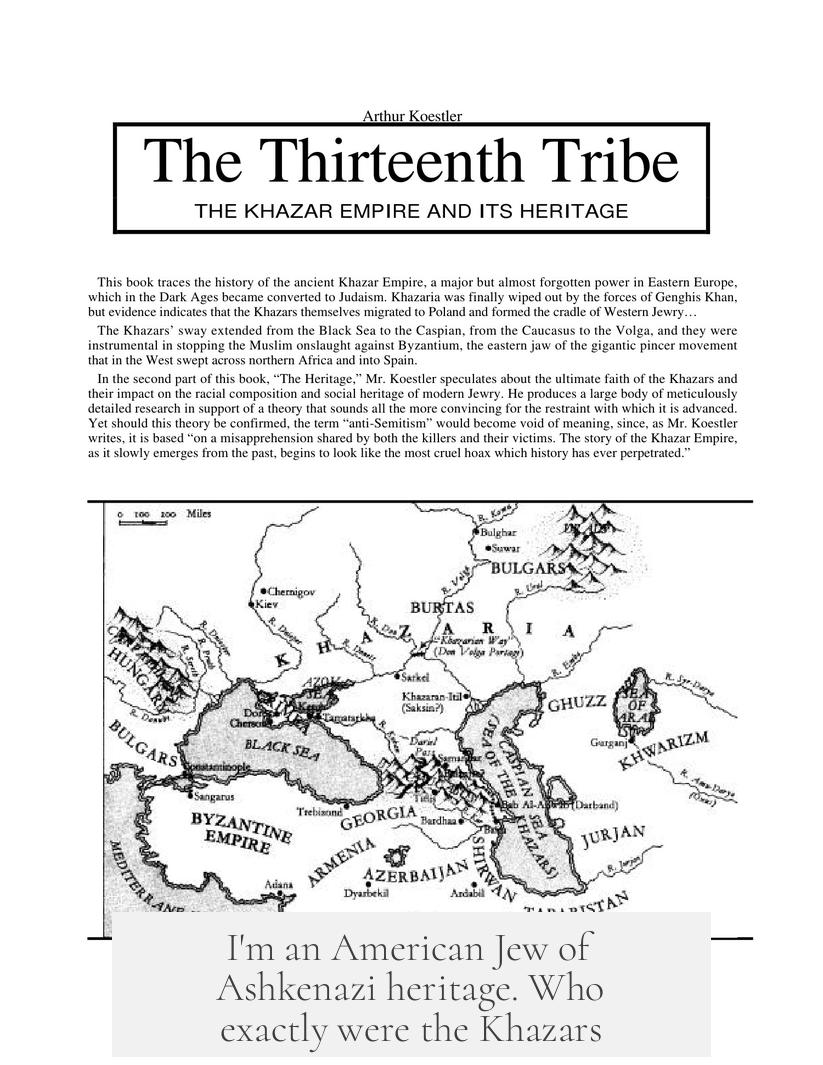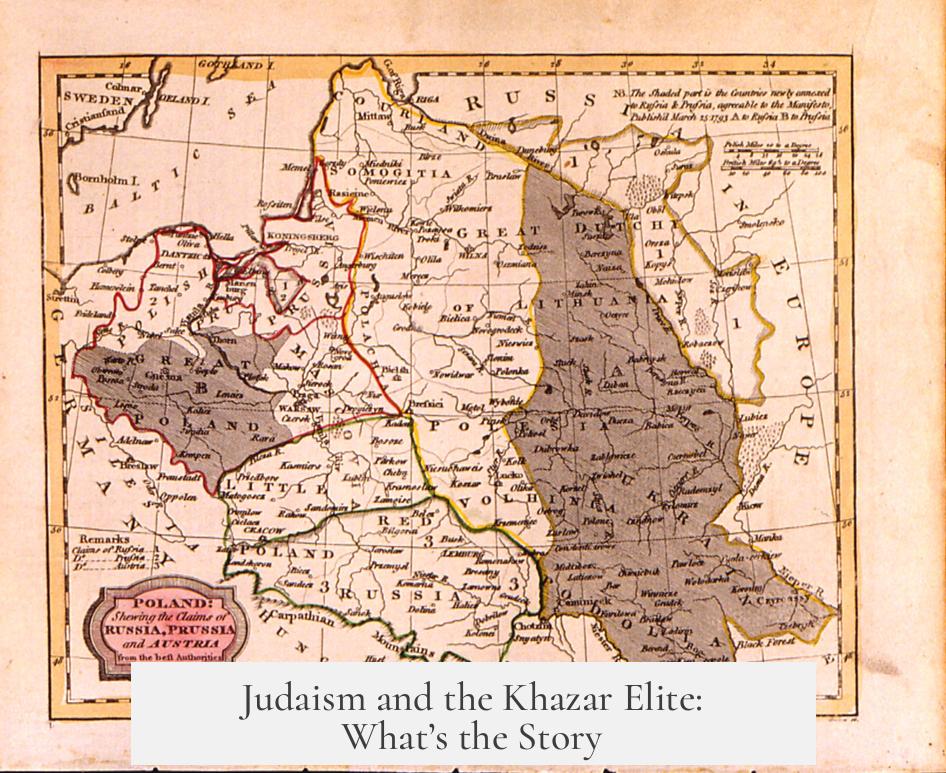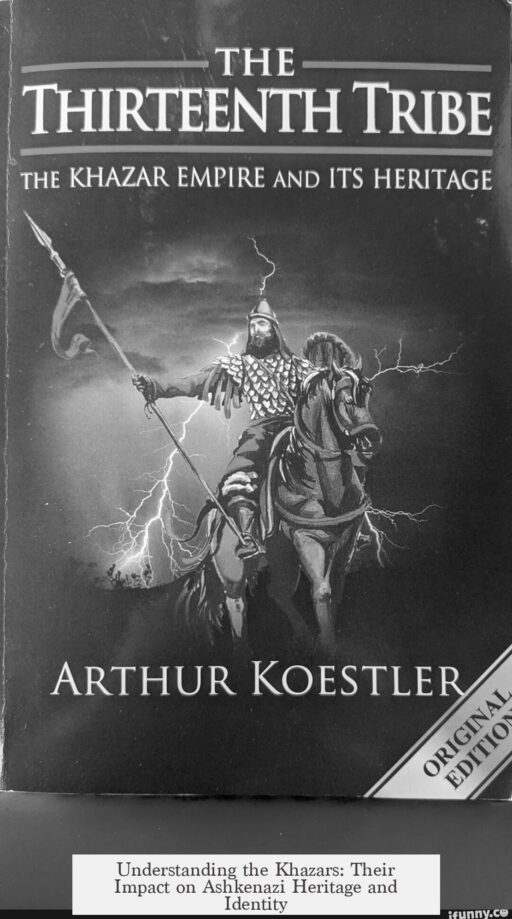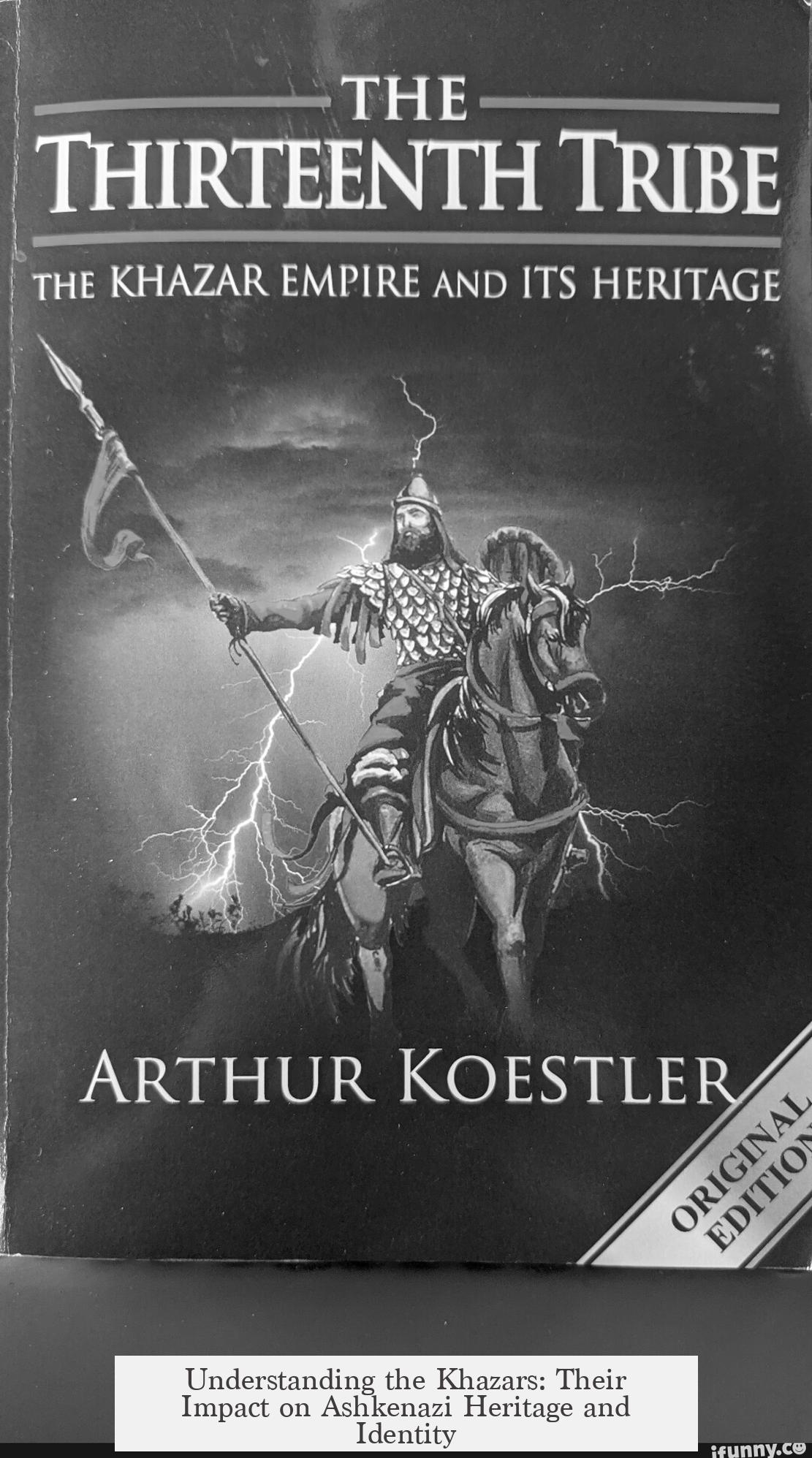The Khazars were a semi-nomadic Turkic people who lived from the 7th to the 11th century CE in the Caspian Steppe region, including areas near the Volga River and the North Caucasus. They formed a powerful empire known as the Khazar Khaganate, which played a major role in Eurasian politics and culture during the early medieval period.
The Khazar Khaganate rose after the collapse of the Turkic Khaganate. Initially rooted in Turkic traditions and shamanistic religion, the Khazars established themselves as a dominant force between the 7th and 11th centuries. Their control stretched across the Pontic-Caspian Steppe, from what is now central Ukraine to east of the Volga River. Much of their territory was bounded by expansive northern forests. This geo-strategic location allowed them to influence trade routes and engage with neighboring peoples.
The Khazars expanded their empire by subjugating or expelling neighboring groups such as the Bolgars. Their military strength peaked during the 9th and 10th centuries, at which point their rule was largely uncontested. The empire declined following the mid-10th-century invasion led by Sviatoslav of Kyiv, which weakened Khazar dominance and eventually led to the collapse of their state.
An important aspect of Khazar history is their unique religious development. Initially, the Khazar elite practiced shamanism, similar to many Turkic peoples of the time. However, sometime in the 8th or 9th centuries, the Khazar ruling class converted to Judaism. The exact motive behind this significant shift remains uncertain, though geopolitical considerations likely played a central role. Positioned between two great powers—Christian Byzantine Empire and the Islamic Caliphates—the Khazars may have adopted Judaism to maintain political independence and neutrality.
Despite the elite’s adoption of Judaism, Khazar society remained religiously diverse. Various communities within the Khaganate continued practicing Christianity, Islam, and traditional Turkic religions. Contemporary records indicate that the Khazar capital, Atil, recognized multiple faiths legally, with judges representing different religious groups overseeing their own communities.
The extent of Judaism’s spread among the general Khazar population is unclear. Scholars have debated whether Judaism was mostly confined to the elite or if it became widespread among the common people. After the Khaganate fell, questions arose about the fate of Khazar Jews. Some theories propose that Khazar Jews assimilated into other populations. One group, the Crimean Karaites, claim Khazar descent, although most historians regard this connection as tenuous.
The Khazars have gained renewed attention due to a controversial theory linking them to Ashkenazi Jews. In the 19th century, racial science fed speculation about a Khazar origin for Eastern European Jews. This idea gained popularity with Arthur Koestler’s 1976 book The Thirteenth Tribe, which argued that Ashkenazi Jews descend primarily from Khazars, not ancient Semitic populations.
Modern genetics, however, firmly disproves this hypothesis. Studies reveal that Ashkenazi Jews share strong genetic connections with Levantine groups, showing little relation to Central Asian or Turkic populations like the Khazars. Despite clear scientific evidence, the Khazar theory persists in some circles, occasionally exploited for political or anti-Semitic agendas.
Academic consensus accepts that the Khazar elite converted to Judaism but debates about the exact form and impact of Khazar Judaism continue. The field has evolved rapidly in recent decades. Leading works such as Kevin Alan Brook’s The Jews of Khazaria offer accessible, detailed explorations of Khazar history and culture, reflecting new archaeological and textual discoveries.
Archaeological records demonstrate Khazar society’s multiethnic nature. Burial sites reveal Turkic, Finnic, and Slavic influences, indicating the Khaganate was more of a cultural and political mosaic rather than a homogenous group. This diversity influenced the Khazars’ social structures and religious practices.
- The Khazars were Turkic semi-nomads dominating the Pontic-Caspian Steppe from the 7th to 11th centuries.
- They established a powerful empire that peaked in the 9th and 10th centuries and declined after attacks from Kyiv.
- The ruling class converted to Judaism in the 8th or 9th century, possibly for geopolitical reasons.
- Khazar society remained diverse, with legal recognition of Judaism, Christianity, Islam, and traditional religions.
- Genetic evidence shows Ashkenazi Jews mostly descend from Levantine ancestors, not Khazars.
- Khazar archaeology indicates a multiethnic population mixing Turkic, Finnic, and Slavic peoples.
- The Khazar hypothesis linking them to modern Ashkenazi Jews lacks scientific support but remains culturally significant.
I’m an American Jew of Ashkenazi heritage. Who exactly were the Khazars?

Let’s cut to the chase: The Khazars were a Turkic semi-nomadic people who lived between the 7th and 11th centuries CE around the Caspian Steppe, spanning what is today parts of southern Russia, Ukraine, and the North Caucasus. Their ruling elite famously converted to Judaism sometime in the 8th or 9th centuries, but the full scope and impact of this conversion still puzzle historians. For Ashkenazi Jews wondering about a possible Khazar connection—modern genetics says the answer is a clear “no.” Curious? Let’s dive deeper!
Who Were These Khazars, Anyway?
Imagine a Turkic people who began as semi-nomads, roaming the vast steppes near the Caspian Sea. These are the Khazars. Originating from the Turkic Khaganate, they inherited much of their power structure from this earlier regime. Following its downfall, the Khazars carved out their own empire along the Volga River and stretched into the North Caucasus.
Between the 7th and 11th centuries, their territory stretched impressively. By the 8th century, they were basically the big boss of the Pontic-Caspian Steppe—from central Ukraine almost to the Volga River.
Powerful Empire With a Military Punch
The Khazars didn’t just sit on their territory politely. They were quite the regional power, overthrowing or pushing out neighbors like the Bolgars. Their empire peaked in the 9th and 10th centuries, holding control over a massive expanse of land.
However, empires fall, and the Khazar empire did too, after a mid-10th century invasion by Sviatoslav of Kyiv, fading into history but leaving a rich legacy.
Judaism and the Khazar Elite: What’s the Story?

Here’s where it gets fascinating and a bit mysterious. The Khazar ruling class *converted* to Judaism sometime in the 8th or 9th centuries. But why? Sorry, no time machines or clear memos survive to answer that definitively.
Theories abound. The leading idea is geopolitical strategy. The Khazars found themselves sandwiched between Christian Byzantium and the Islamic Arab Caliphates—both powerful neighbors with religious expectations. By adopting Judaism, the Khazar elite could maintain neutrality and independence between these two superpowers, sidestepping religious dominance or forced allegiance.
We should note the general population was religiously diverse: many stuck with shamanism, while Christians, Muslims, and Jews all lived under the Khazar empire, legally recognized and governed by their own judges—a surprisingly tolerant multi-faith society for its time.
Did All Khazars Become Jewish? Not So Fast.
While the rulers embraced Judaism, the broader population’s conversion level is murky. Some sources suggest only the elite converted. Others hint at a more widespread adoption of Judaism, but no definitive census exists. The mystery only grows because it raises compelling questions like, “Where did the Khazar Jews go after the empire collapsed?”
A group called the Crimean Karaites claim descent from Khazars, but scholars doubt a close relation due to linguistic, religious, and cultural differences. So, no straightforward “Khazar descendants” parade today on the world stage sporting star badges of Khazar heritage.
What About Ashkenazi Jews and the Khazar Hypothesis?
This question often comes to the forefront for American Jews of Ashkenazi background. Are they descendants of Khazars? The short answer is: no.
In the 19th century, racial science sparked theories about Khazar origins of Ashkenazi Jews. This idea took on new life in 1976 with Arthur Koestler’s popular book, The Thirteenth Tribe, which claimed Ashkenazi Jews mostly descend from Khazars, not ancient Israelites. This theory stirred debate and sometimes fueled conspiracy theories.
But modern genetics has slammed the door on this. DNA studies show Ashkenazi Jews carry strong genetic markers linking them to Levantine ancestry, not Central Asian Turkic groups. In fact, there are very few genetic shared markers with Khazar-related populations, indicating that the Khazar connection is minimal at best.
Despite this, the ‘Khazar theory’ remains alive in some circles, often misused in anti-Semitic and political arguments. So, if you hear someone toss the Khazar card in your direction, remember: science doesn’t back it.
How Do Historians View the Khazars Today?

Most historians agree the Khazar elite did convert to Judaism. However, interpretations vary about how Khazar Judaism looked and functioned. Was it orthodox Jewish practice as we understand it today? Probably not. It was likely an adaptation influenced by the complexities of ruling a multi-ethnic empire on the crossroads of Asia and Europe.
If you want a solid introduction, try Kevin Alan Brook’s The Jews of Khazaria. It offers an accessible yet thorough exploration of the Khazar world, and academic study on the subject keeps evolving. What used to be dismissed or exoticized is now seen as a dynamic chapter in Eurasian history.
What About Khazar Society? It Was Diverse!
Archaeological digs tell us Khazar society was a melting pot. Burial sites in the north and west reveal a mix of Turkic, Finnic, and Slavic remains, reflecting the empire’s ethnic and cultural diversity. This diversity added layers to their societal fabric—imagine multiple languages, traditions, and beliefs coexisting under one Khazar roof.
Why Should American Jews of Ashkenazi Heritage Care?
Learning about the Khazars is like exploring a fascinating “what-if” in the Jewish story. It reveals history’s twists and turns and highlights the resilience and adaptability of Jewish identity over the centuries. The Khazars remind us that Judaism—and indeed any identity—is not always a fixed package.
But as someone deeply connected to Ashkenazi heritage, it’s reassuring to know that your roots trace more clearly back to the Levantine lands. That’s not just a genealogical point but a piece of cultural and spiritual clarity.
Wrapping It Up
The Khazars were a semi-nomadic Turkic people who carved out a unique place in early medieval Eurasia. Their elite’s conversion to Judaism is a rare and intriguing episode. However, the popular belief that Ashkenazi Jews descend from those Khazar converts doesn’t hold up to modern scrutiny. Through archaeology, history, and genetics, we see a complex, multicultural empire whose legacy continues to invite curiosity and scholarship.
So next time someone brings up the Khazars at a family dinner or a community event, you’ll be ready. The truth is more nuanced and richer than simplified theories. And hey, maybe now you can impress your friends with your Khazar trivia and clear up one of history’s curious puzzles!
“Khazars: Not your typical medieval chess players, but they sure moved history’s pieces in a fascinating way.”
Who were the Khazars and where did they live?
The Khazars were a semi-nomadic Turkic people. They lived from the 7th to 11th centuries in the Caspian Steppe, around the Volga River, and the North Caucasus region.
Did the Khazar elite really convert to Judaism?
Yes, the Khazar ruling class converted to Judaism in the 8th or 9th century. The reasons are unclear but likely connected to political pressures from Christian and Muslim neighbors.
Was the entire Khazar population Jewish?
No, only the elite converted. Many Khazars continued to follow shamanism, Christianity, or Islam. Each religion had legal recognition and its own judges in the Khazar capital.
Are Ashkenazi Jews descended from the Khazars?
Modern genetics show Ashkenazi Jews mostly descend from Levantine populations. The theory that they come from Khazars is not supported by DNA evidence.
What happened to the Khazar Jews after the Khaganate fell?
It is unknown how many Khazars remained Jewish after the empire’s fall. Some groups like the Crimean Karaites claim descent, but they are likely not closely related.
How do historians view Khazar Judaism today?
Most historians accept the Khazar conversion to Judaism, but debate the details of their Jewish identity. Research continues to evolve, with works like Kevin Alan Brook’s book being key resources.




